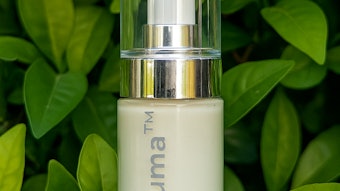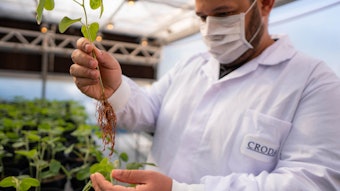μηδέν άγαν—“nothing in excess” —Temple of Delphi, Greece
Your face cream can kill you! Fragrances are deadly mixtures of secret chemicals!
Frightening, emotionally powerful messages—and totally misleading. But how does the industry respond to hot emotions with cold science? In this Age of Twitter, with attention spans shrinking and scientific literacy in decline, how can the nuances of toxicology be explained in simplistic bullet points?
The recent debate between the Environmental Working Group (EWG) and the fragrance industry1 is just one example of the public relations battle being waged over the safety of consumer products.
With The Safe Cosmetics Act floating around the U.S. Congress, the industry must do everything possible to keep good science in the forefront of the public consciousness.
There are a few issues at the heart of consumer concerns. Household products and fragrances aren’t required to have ingredient labeling, and, for some, there is the perception that they are laden with toxic secret ingredients. Then there are those who simply think chemicals are bad and natural products are good.
They are able to believe, at a profound level, that natural products are not made from chemicals. Finally, there is the fact that some chemicals are indeed bad, but generally the effect depends on the exposure conditions. Taking the narrative to exposure rather than risk is essential to win consumer confidence.
Dosages and Signal to Noise Ratio
The basic principle underlying all toxicology is credited to Paracelsus, the Swiss-born physician/chemist credited with developing a mineral-based chemical approach to human health problems: The poisonous potential of a substance depends on its dose. Michael Jackson and his use of propofol is an example: A little bit, just 25 mg, is a sleep aid. Piling it on and combining it with benzodiazepines is deadly. Yes, the dose makes the poison.
In regards to the body’s response to an essential nutrient, too little and there is illness, too much and there is illness, possibly fatality. The right amount sustains health. No concept in safe drug use, nutrition or any chemical exposure is more important than dosage. Yet many consumers find it hard to apply this simple idea to cosmetics or perfumes.
Where can consumers turn for information? In the Age of Twitter, information is abundant, but the signal-to-noise ratio threatens the accuracy of the message. One can turn to companies, industry organizations, consumer groups and non-governmental organizations, the media, the government or the toxicologists themselves.
The cosmetic database2 sounds like a good starting point. It gives the appearance of an objective, independent champion of consumer safety. In fact, it is a spin-off of the EWG, which has a fundamentally anti-industry bias. EWG uses science, but it is fundamentally flawed science, outside the realm of peer-reviewed research. Whatever criticism one may have of the beauty industry, it never puts forth critical data with the recklessness of the EWG.
The official industry voice is the Personal Care Products Council (PCPC).3 For insight on safety, go to www.cosmeticsinfo.org—it links to the Cosmetic Ingredient Review site.4 The first edition of the Cosmetic, Toiletry, and Fragrance Association’s (PCPC before its name change) Cosmetic Ingredient Dictionary dates back to 1973. The industry set up an expert panel to assess cosmetic safety in 1976. But since most consumers seem totally unaware of the industry commitment to safety, it is clear that the wrong sites get googled when the average person looks for information.
Some companies have taken a proactive position on ingredient disclosure beyond that mandated by law. SC Johnson is a good example, and it does it with household products, which have little to no labeling requirements. Its site5 explains the use of chemicals; why dyes, preservatives, and fragrances are in their products; the importance of quantity, and the potential harm of natural products.
You shouldn’t forget the role of the government in establishing safety standards. The U.S. Food and Drug Administration and the United States Environmental Protection Agency (EPA) can surely provide clear and definitive guidance. So how has the EPA handled a hot button topic, dioxin, for example? Not well. In 1982, a high level of dioxin was found in the soil of Times Beach, Missouri.
The residents were evacuated, and a $100 million cleanup that took 10 years reclaimed the land for a park. The levels of dioxin in Times Beach were 100 times above the level EPA found acceptable.
The Times Beach case was clear, but regulating lower levels of dioxin has proven a greater challenge.6 A committee of the National Academy of Sciences that reviewed the EPA’s assessment of dioxin determined that there is a threshold below which the risk of cancer disappears. But in May 2010, EPA rejected the threshold approach to cancer risk. European regulators and the World Health Organization (WHO) decided a decade ago that dioxin did have a safe threshold, and they accept exposure levels much higher than the EPA’s proposed standard.
So if the EPA and the WHO can’t agree on a safe threshold for dioxin, is it unreasonable that consumers are confused by all the allegations of dioxin contamination in cosmetics and fragrances? Similar problems exist with parabens and phthalates—bad science driving out good science from the debate.
Since most websites about consumer goods have either a pro or anti industry bias, an objective alternative is the toxicologist. Toxicologists, dealing with the subject in general rather than specific product types, should be a reliable baseline for everyone. One useful resource is the Society of Toxicology.7 A lot of the web material on its site is directed at teachers and students K–12, making it a wonderful guide for non-scientists.
Converting Data
Data can be gathered on the potential harm of chemicals in a straightforward way. Converting that raw data to safety criteria is a very different matter. The LD50 value is a standard measurement of acute toxicity. An LD50 represents the individual dose required to kill 50% of a test subject group; the lower the LD50 dose, the more toxic. The acceptable LD50 for establishing a safe use level involves informed judgment. In real science, expert panels publish results in peer-reviewed journals. In the Age of Twitter, anyone can gain an instant audience for fallacious claims. As the information is repeated again and again in different outlets, it takes on the aura of truth.
The “Risk in the Mass Media,” an excellent symposium conducted by the University of New Hampshire School of Law, contains the following perceptive comment:8 “Due to the media’s handling of the dioxin reassessment controversy—in particular, many reporters’ scanty treatment of various risk estimates and related scientific uncertainties—the public is not sure what to believe about how harmful this chemical is.”9 The symposium was held in 1996. The only thing that has changed in the intervening years is the ease of spreading misinformation.
The bottom line is that cosmetics and fragrances are mixtures of chemicals, just like everything else on earth. Aliens did not bring cosmetics here to poison you. Everyone knows some elementary principles of product safety. Don’t eat raw pork or swallow a bottle of pain pills washed down with a bottle of vodka. The suggestion carved in the wall of the temple of Delphi—“nothing is excess”—is the basis of consumer safety. Common sense and good science are far superior to ill-informed and emotional attacks, and everyone involved in personal care should make an effort to make this the winning narrative in the minds and hearts of your customers.
References
- S Herman, Two Views of Safety, GCI mag, 178 11 58–59 (2010)
- www.cosmeticsdatabase.com
- www.personalcarecouncil.org
- www.cir-safety.org
- www.whatsinsidescjohnson.com
- www.npr.org/2010/12/28/132368362/a-chemical-conundrum-how-dangerous-is-dioxin
- www.toxicology.org
- http://law.unh.edu/risk/vol5/summer/friedman.htm
Steve Herman is president of Diffusion LLC, a consulting company specializing in regulatory issues, intellectual property, and technology development and transfer. He is a principal in PJS Partners, offering formulation, marketing and technology solutions for the personal care and fragrance industry. He is an adjunct professor in the Fairleigh Dickinson University Masters in Cosmetic Science program and is a Fellow in the Society of Cosmetic Chemists.










